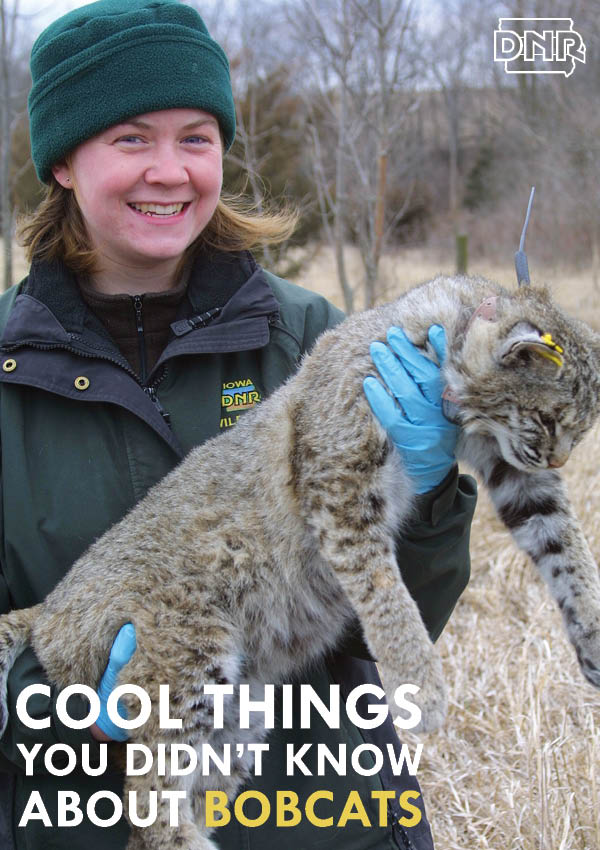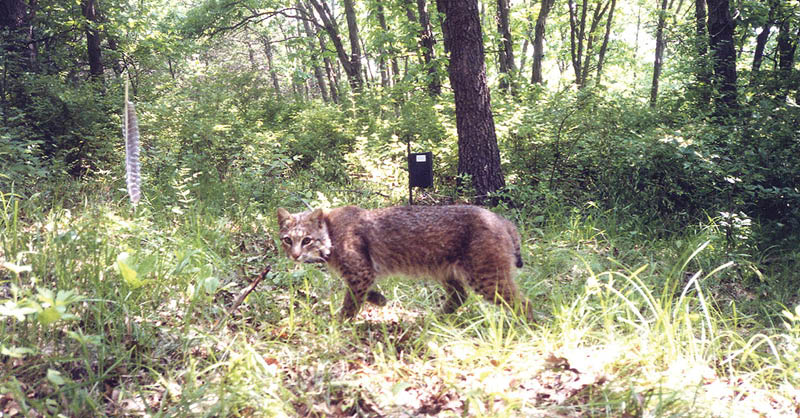 At the brink of being wiped out in Iowa just a few decades ago, the bobcat has staged a major comeback in the state. Even with more cats around – mostly in southern counties – it’s still not common to see one, as they’re a pretty secretive bunch. But here are a few bobcat “secrets” you can share with your friends:
At the brink of being wiped out in Iowa just a few decades ago, the bobcat has staged a major comeback in the state. Even with more cats around – mostly in southern counties – it’s still not common to see one, as they’re a pretty secretive bunch. But here are a few bobcat “secrets” you can share with your friends:
Bobcats are well- traveled.
Bobcats in Iowa can move up to 10 miles in a week. Even with babies in tow, female bobcats will move their den sites several times during their rearing period. Bobcats usually build dens out of rock shelters or brush piles.
Don’t get confused.
Bobcats are one of three wildcats native to Iowa, along with the lynx and mountain lion. Bobcats, however, are the only ones that still have established populations in Iowa. Bobcats are often mistaken for their larger mountain lion relatives, however these facts will help you tell them apart: the mountain lion has a long tail (2.5 to 3 feet), while the bobcat has a short “bobbed” tail that’s smaller than 10 inches. Bobcats are only 3 feet in length, while adult male mountain lions are 7 to 9 feet. Mountain lions weigh 90 to 160 pounds, while bobcats weigh 20 to 30 pounds. Bobcats tend to be darker brown, with lighter belly fur and spots, while mountain lions tend to be a more uniform brown, tawny color.
Bobcats don’t target game birds as much as other critters.
Studies done on Iowa on bobcats showed their diet consisted of 95 percent rabbits, mice, voles and squirrels, especially during the fall and winter months, with little to no evidence of game birds found in their diet. However, it’s likely that like any cat, a bobcat would eat a game bird if given the chance. Still, that doesn’t mean they have a significant impact in lowering gamebird populations – that’s related to loss of habitat and harsh weather.
These cats don’t have too many lives.
Adult bobcats live for three to five years, on average, in Iowa. Some old-timers have reached 10 years old.
Bobcats were once endangered in Iowa.
As numbers dwindled due to a loss of habitat, the DNR listed the bobcat as an endangered species in 1977. Bobcat populations rebounded over time, and its status moved to a threatened species in 2001 and then a protected species in 2003. In 2007, numbers had improved to a point where the state could sustain a limited bobcat season. Bowhunters that fill out an annual survey help the DNR track trends in bobcat populations.
Learn more about research done on bobcats in Iowa, or for more information on Iowa wildlife, check out the Iowa Wildlife board on Pinterest.
